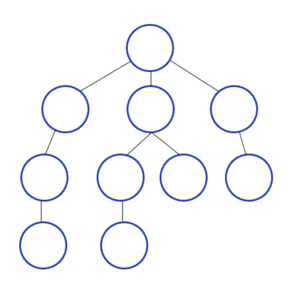Depth-first search facts for kids
Imagine you're exploring a maze. Depth-first search (DFS) is a smart way for computers to explore paths in a graph. A graph is like a map with points (called 'nodes' or 'vertices') and lines connecting them (called 'edges'). DFS starts at one point and goes as deep as it can along one path. If it hits a dead end or a point it has already visited, it goes back and tries another path.
Contents
How DFS Works
Think of DFS like a curious explorer. It picks a starting point, then follows one path as far as it can go. It keeps going deeper and deeper into the graph. If it reaches a dead end or a place it has already seen, it doesn't just give up. Instead, it "backtracks" (goes back) to the last point where it had another choice. From there, it picks a new path to explore. This process continues until every reachable part of the graph has been visited.
Exploring a Maze
DFS is very useful for solving mazes. If you were to use DFS to find your way out of a maze, you would pick a path and follow it until you hit a wall. Then, you would go back to the last turn you made and try a different path. You keep doing this until you find the exit.
Finding Connections
Computers use DFS for many tasks. For example, it can help find if two points in a network are connected. It can also help find all the connected parts of a graph. Imagine a social network; DFS could find all your friends, your friends' friends, and so on, until it finds everyone connected to you.
When is DFS Used?
DFS is a powerful tool in computer science. It's used in many different areas:
- Pathfinding: Like finding a way through a maze or a route on a map.
- Web Crawlers: Search engines use similar ideas to explore websites and find new pages.
- Game AI: In some video games, AI (Artificial Intelligence) uses DFS to figure out possible moves or paths.
- Network Analysis: Understanding how different parts of a computer network are connected.
Related pages
See also
 In Spanish: Búsqueda en profundidad para niños
In Spanish: Búsqueda en profundidad para niños


